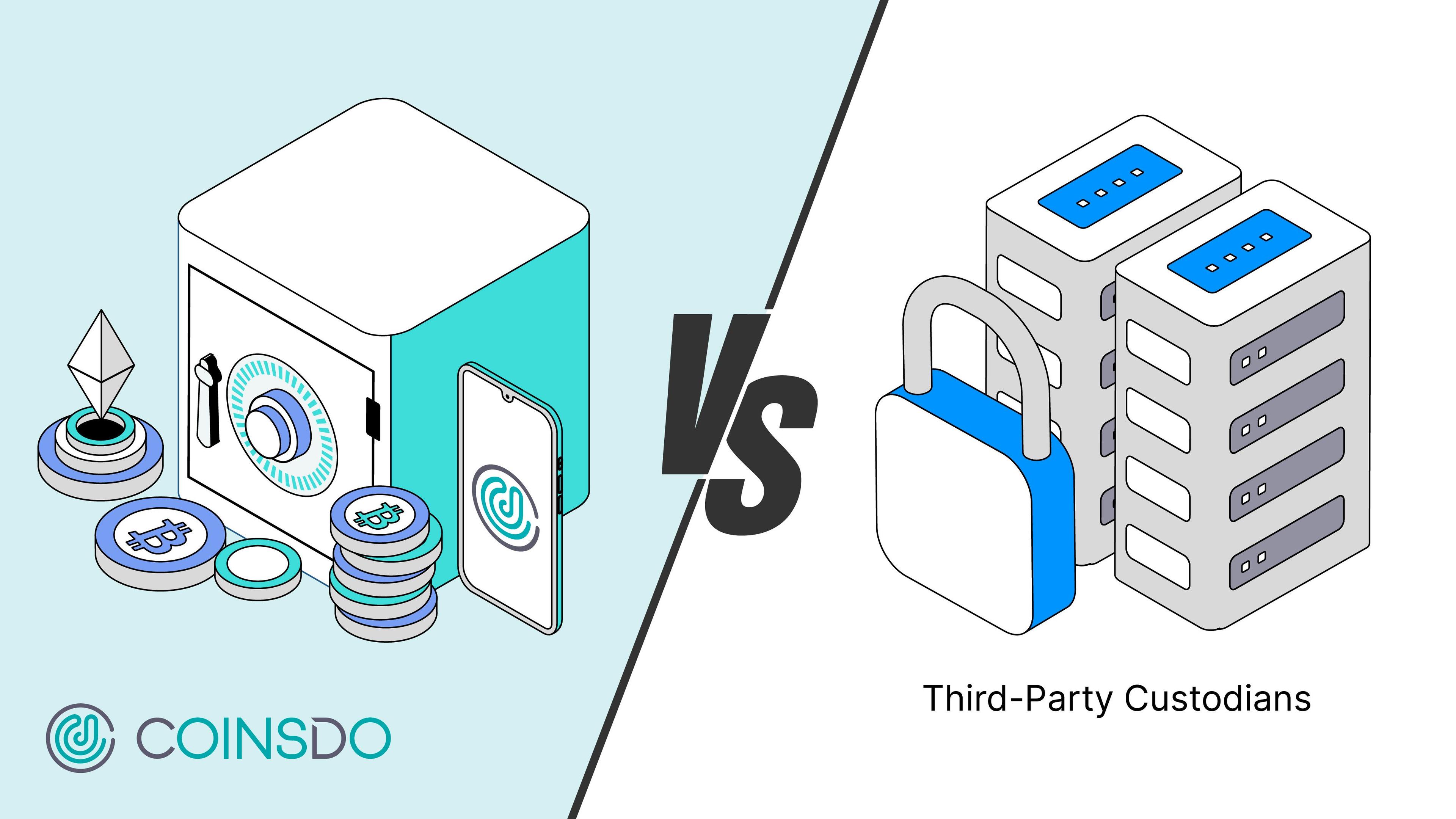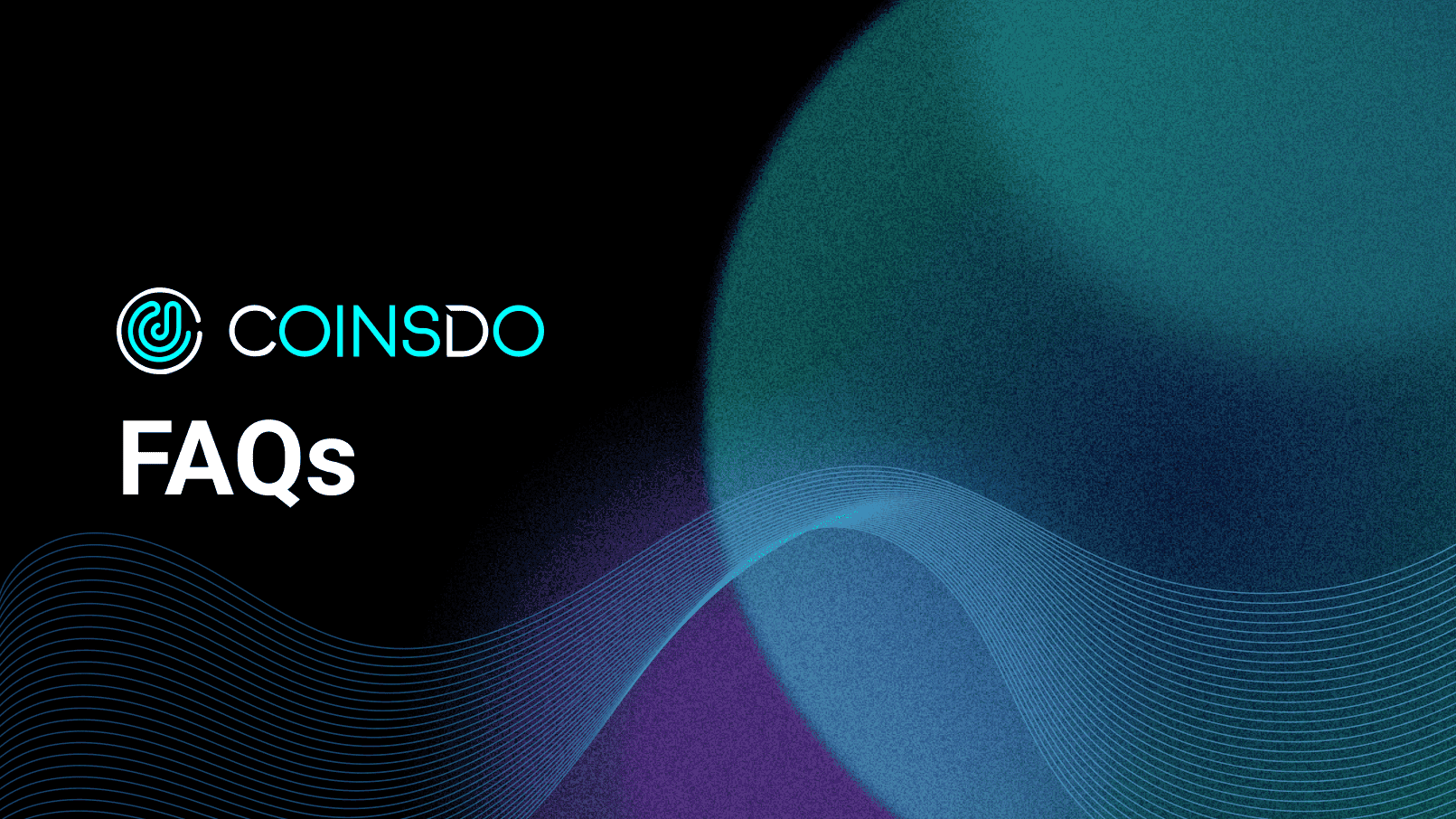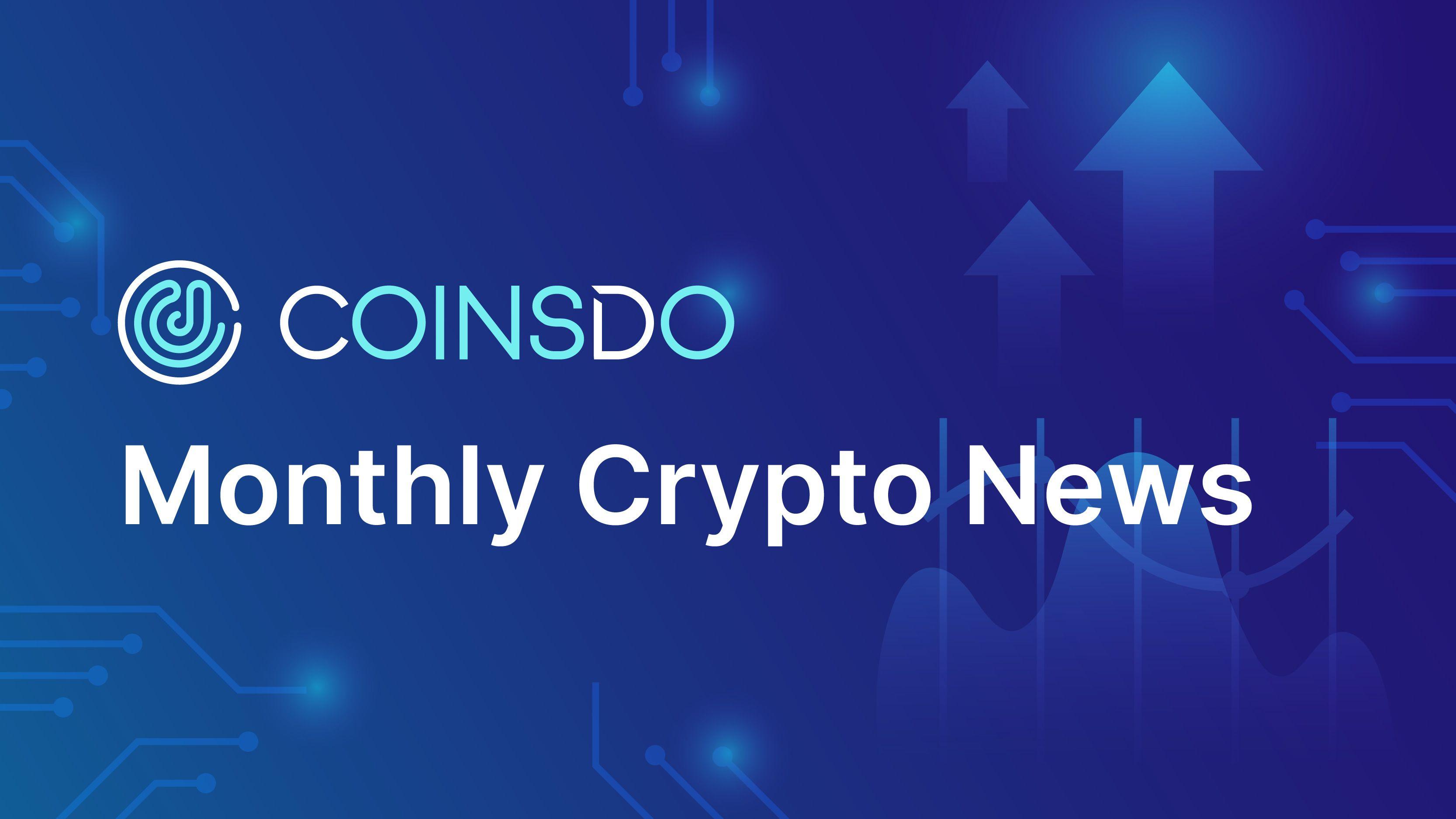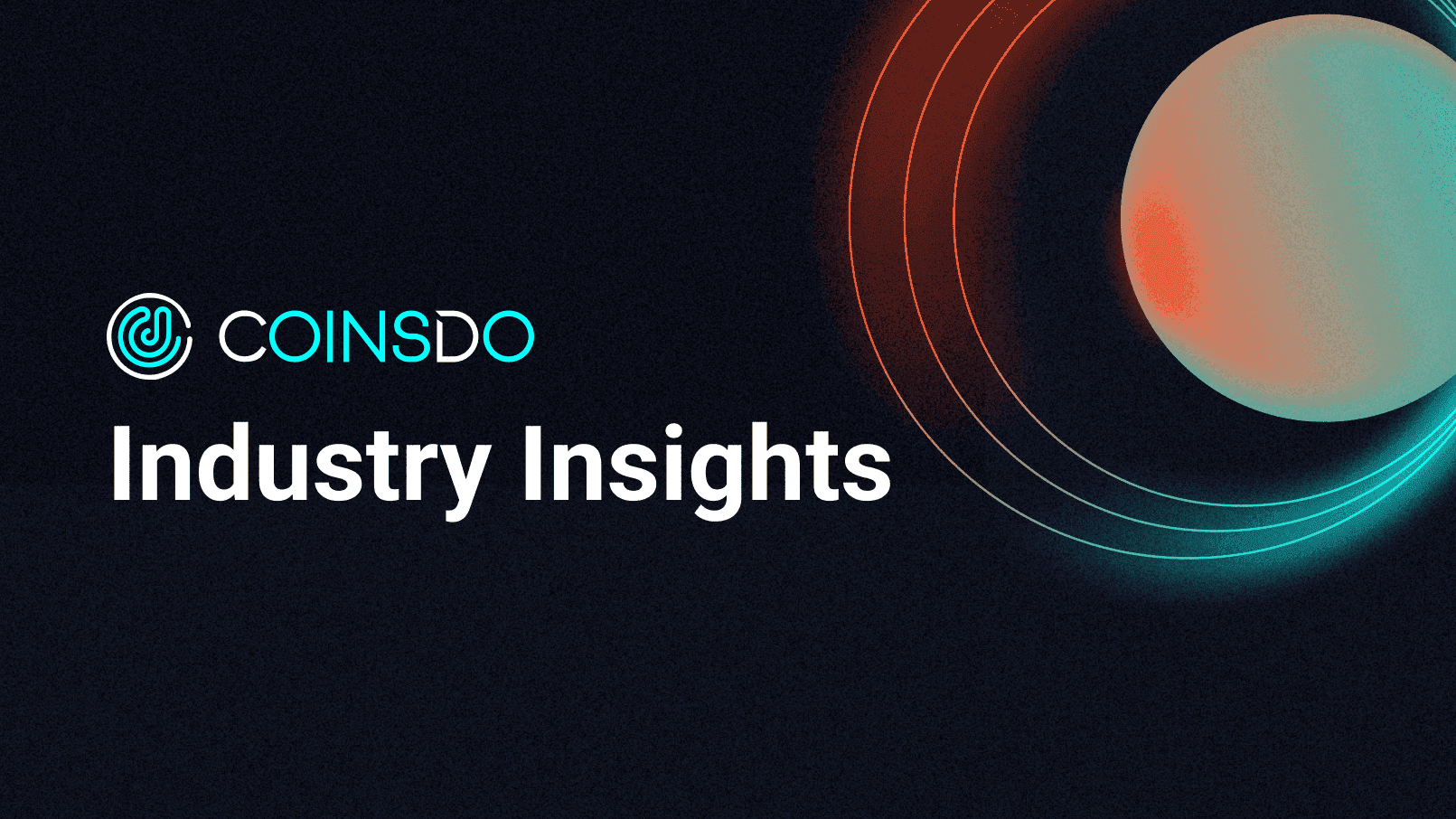
8 min read
The Better Option for Digital Asset Management: CoinsDo or Third-Party Custodians?
Digital asset management is a pivotal component in the web3 era. As the cryptocurrency space matures and decentralized technologies evolve, the importance of secure, efficient, and compliant asset management has never been more significant. With various options available, businesses must make an informed choice between non-custodial and third-party custodians for their digital assets.
Third-party custodians take charge of the security of the digital assets, holding the private keys in a centralized manner. They are often regulated entities and offer varying degrees of insurance on the stored assets.
Non-custodial solution providers like CoinsDo provide businesses with the infrastructure to maintain full control over their private keys and, consequently, their digital assets.
In this blog post, we will compare the two options from the following aspects: security, cost, and flexibility. This will give you a better idea of which option is best for your business.
1. Security
Third-Party Custodians
Custodial solutions for digital asset management often come with an array of high-level security measures designed to protect digital assets, such as cold storage options for keeping assets offline and away from potential online hackers, multi-signature wallets that require multiple approvals before transactions can be processed, and advanced encryption techniques to protect the integrity and confidentiality of data. However, even with these robust security measures in place, custodial solutions are not without the following risks:
Centralized Breaches
Custodial solutions usually store assets in a centralized repository, making them more susceptible to targeted cyber attacks. In a centralized system, once the security barriers are breached, hackers gain access to a significant pool of assets, leading to potentially catastrophic losses. While cold storage and multi-signature wallets can add layers of protection, they can't entirely eliminate the risks associated with having a single point of failure.
Internal Vulnerabilities
Another risk comes from within the organization itself. Employees with access to critical systems can pose an insider threat, either intentionally or inadvertently. Even with the best hiring practices and internal protocols, there is no foolproof way to mitigate this risk completely. It's a persistent issue in any system that requires human oversight, regardless of how advanced the technological solutions are.
CoinsDo
Unlike traditional custodial solutions, CoinsDo operates on a non-custodial architecture, which offers a distinct set of advantages in addressing the risks associated with third-party custodianship mentioned above:
Decentralized Security
CoinsDo's non-custodial approach inherently reduces the risk associated with centralized breaches. Since assets are not stored in a centralized repository but managed via secure, decentralized protocols, the risk of a single point of failure is eliminated. This decentralization provides a security edge over traditional custodial services, making it much more challenging for attackers to compromise a large volume of assets.
Minimized Internal Vulnerabilities
With non-custodial solutions like CoinsDo, the internal threat surface is also considerably reduced. The architecture is designed in a way to limit employee exposure to the company’s private keys, separating all individuals involved in crypto operations into three specific groups: key holders, operation staff, and developers. Let's break this down:
Key Holders: These are the “custodians” of your digital keys. However, they don't need private key access to complete a transaction, minimizing the risk of unauthorized access.
Operations Staff: While they manage the day-to-day operations, they don't have access to the private keys. This limits their ability to compromise the system even if they wanted to or were coerced into it.
Developers: While they may design and maintain the system, they too don't have access to the private keys, ensuring an additional layer of security.
By segregating these roles, CoinsDo ensures that no single entity can compromise the system, thereby drastically reducing the potential for internal fraud.
2. Costs
Third-Party Custodians
In the realm of third-party custodial services for digital asset management, fee structures are commonly tied to the size of your Assets Under Custody (AUC). This creates an environment where the cost of the service scales with the growth of your asset portfolio.
While this might seem like a fair model at a glance, it carries some hidden complexities that can affect your bottom line. As your business expands and the volume of digital assets under your management balloons, the percentage-based fees can translate to significant monetary outflows.
The financial impact is especially pronounced for larger enterprises or financial institutions with substantial digital holdings. Such a model could lead to escalating operational costs, directly impacting profitability and potentially affecting the allocation of resources for other critical business functions.
CoinsDo
CoinsDo, on the other hand, offers a radically different approach to fee structure by providing non-custodial solutions. Unlike third-party custodians who charge based on AUC, CoinsDo charges a flat, transparent fee for their range of solutions, including CoinGet, CoinSend, and CoinSign. This flat-fee model delivers several key advantages:
Predictability: Knowing the costs upfront allows businesses to budget effectively without worrying about fluctuating expenses related to digital asset management.
Scalability: A flat fee means that as your assets grow, your costs won't grow proportionally, allowing you to enjoy economies of scale.
Financial Planning: A transparent and fixed fee model makes it easier to integrate the costs of digital asset management into long-term financial planning, helping businesses better forecast future expenses and growth.
Reduced Long-Term Costs: Over time, as the business accumulates more digital assets, the flat fee becomes an increasingly smaller percentage of total assets, making it an economically savvy choice for sustainable growth.
3. Flexibility
Third-Party Custodians
Custodial solutions often have restrictions on how and when you can access or move your assets. These may come in the form of withdrawal limits, transaction fees, or wait times for transactions to be processed. While these restrictions are generally in place for security reasons, they can limit a business's ability to react quickly to market changes or take advantage of opportunities as they arise.
CoinsDo
With CoinsDo, businesses have direct control over their private keys and assets, meaning they have the ability to manage their funds however they see fit. This is crucial for businesses that may need to quickly move funds or react to market changes. It also allows for customized security measures based on the specific needs of the business.
Final Verdict
Both non-custodial and third-party custodial solutions have their merits and demerits. While non-custodial options offer more control and usually better security, third-party custodians provide a level of ease and professional management that some users might find appealing.
Overall, for businesses that prioritize security, scalability, and autonomy, non-custodial solutions like CoinsDo seem to be a better fit. If that sounds like you, contact our sales team for a free demo today!



